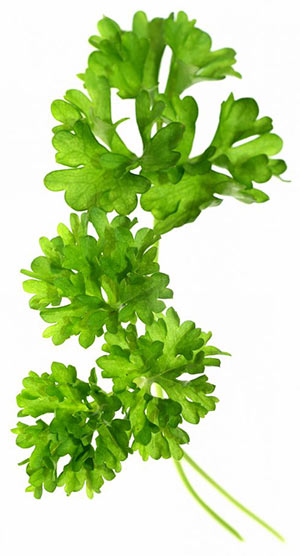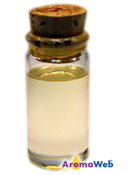Parsley Seed Essential Oil
Petroselinum crispum / Petroselinum sativum

Description
Parsley Seed Essential Oil is best known for its use as a diuretic and its ability to shrink blood vessels. See the Uses section below for more information and citations.

Aromatically, Parsley Seed Essential Oil adds an herbaceous character to blends. Its aroma is not commonly enjoyed on its own, and it's best blended at low dilution with other essential oils.
While all essential oils should be used carefully and mindfully, Parsley Seed Essential Oil is one that must be used with extra special care. Be sure to heed the precautions shown in the Safety Information section below.
Parsley Seed Essential Oil Benefits and Uses
- Depurative
- Diuretic
- Cystitis
- Uterine Tonic
- Bruises
- Amenorrhea
- Arthritis
- Cellulites
- Cystitis
- Frigidity
- Griping Pains
- Indigestion
- Rheumatism
- Toxic Build-up
Sources: Salvatore Battaglia, The Complete Guide to Aromatherapy (Australia: The Perfect Potion, 2003), 321. Julia Lawless, The Encyclopedia of Essential Oils (Updated Edition) (London: Harper Thorsons, 2014), 159-160.
Botanical Name
Petroselinum crispum / Petroselinum sativum
Plant Family
Common Method of Extraction
Steam Distilled
Plant Part Typically Used
Color

Light Yellow
Consistency
Thin
Perfumery Note
Middle
Strength of Initial Aroma
Medium - Strong
Aromatic Description
Parsley Seed Essential Oil smells herbaceous, green and slightly woody.
Major Constituents of Parsley Seed Oil
- Parsley Apiole
- Myristicin
- Allytetramethoxybenzene
- a-Pinene
- B-Pinene
- Elemicin
- (+)-Limonene
Source: A. Lamarti, A. Badoc, R. Bouriquet. A Chemotaxonomic Evaluation of Petroselinum crispum (Mill.) A.W. Hill (Parsley) Marketed in France. (Journal of Essential Oil Research 3, 1991), 425-433. Source cited in Robert Tisserand and Rodney Young, Essential Oil Safety (Second Edition. United Kingdom: Churchill Livingstone Elsevier, 2014), 380.
Parsley Seed Essential Oil Safety Information
Tisserand and Young indicate that drug interaction and a risk of hepatotoxity and nephrotoxicity may be present when using Parsley Seed Oil. it is also a potential abortifacient and is contraindicated in pregnancy and breastfeeding. There is a low risk of skin irritation, and they recommend a dermal maximum of 1.1%.Reading Tisserand and Young's full profile is recommended. [Robert Tisserand and Rodney Young, Essential Oil Safety (Second Edition. United Kingdom: Churchill Livingstone Elsevier, 2014), 380-381.]
This essential oil poses a higher risk of causing irritation and sensitization when used in the bath. Avoid using it in the bath, even if it is solubilized/diluted.
General Safety Information
Do not take any oils internally and do not apply undiluted essential oils, absolutes, CO2s or other concentrated essences onto the skin without advanced essential oil knowledge or consultation from a qualified aromatherapy practitioner. For general dilution information, read AromaWeb's Guide to Diluting Essential Oils. If you are pregnant, epileptic, have liver damage, have cancer, or have any other medical problem, use oils only under the proper guidance of a qualified aromatherapy practitioner. Use extreme caution when using oils with children and be sure to first read the recommended dilution ratios for children. Consult a qualified aromatherapy practitioner before using oils with children, the elderly, if you have medical issues or are taking medications. Before using this or any essential oil, carefully read AromaWeb's Essential Oil Safety Information page. For in-depth information on oil safety issues, read Essential Oil Safety by Robert Tisserand and Rodney Young.
Shelf Life
Important Information About the Profiles
The essential oil information provided on AromaWeb is intended for basic educational purposes only. The references to safety information, test results, constituents and percentages is generalized information. Essential oils can vary greatly in composition. The data is not necessary complete and is not guaranteed to be accurate. The essential oil photos are intended to represent the typical and approximate color of each essential oil. However, essential oil composition and color can vary based on harvesting, distillation, age of the essential oil and other factors. Profiles for several CO2 Extracts and absolutes are included within the directory, and are denoted as such.